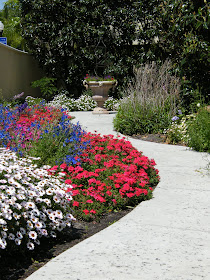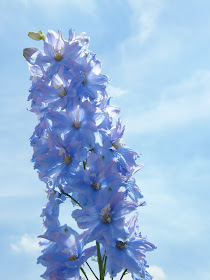Oh yes.
Another feature that's available on most mid-level cameras is white balance control. You know, light comes in all sorts of colors and our eyes naturally adjust to recognize white is, well, white under all sorts of different lighting conditions. But in the shade, white is actually kind of blue. And under incandescent lights it's a little bit yellow. Fluorescent lights? Whoo. I don't even wanna go there.
Your camera isn't smart enough to know the difference.
But you can tell it to compensate for the colors different lighting conditions cast by using your white balance control. Most cameras have settings for shade, clouds, full sun, incandescent (or tungsten), and fluorescent light conditions, along with an AWB or auto white balance option.
As always, consult your camera's manual to see where the options are located on your particular camera. But I thought I would show you the same scene, shot with different white balance settings so you can see the difference. Aperture and shutter speed remained pretty much the same.
For this first shot, the white balance is set to Tungsten/Incandescent. The camera supposes that the light will be yellowish, so it compensates by adding blue.

My mid-level camera offers a couple of different Fluorescent settings. This one looks kind of purple-y. Yuck.

And here's the other Fluorescent setting - a little on the pink side:

This one was shot with the white balance set on Cloudy. Kinda yellowish, huh?

This time, I set the white balance to Shade and the camera added a lot of yellow. A lot.

Here, the camera is set to Auto White Balance, which did a pretty good job:

And here is the correct white balance, Daylight:

You can also use your white balance for creative control. Adding the blue tone of the tungsten setting can make a picture look a little spooky. Shooting with your white balance set on cloudy or shade really makes the colors richer - sometimes a little too rich, but hey. Get creative. Whatever.
And here's a fun little trick that point-and-shoot users and mid-level camera users can both enjoy (and really, advanced camera users can too I guess). Most cameras have a few built-in settings - modes that you can select to take better pictures without having to think about it. Mine offers a portrait mode, landscape mode, flower mode, night mode and a couple of other options. But for the purposes of taking pictures in a garden, I thought we'd have a little fun with landscapes and flowers.
Shooting in landscape mode will give you nice, wide shots and usually richer blues and greens.


I have not edited these photos in any way. I wanted you to see what a nice job your camera can do just by selecting a pre-set mode.
You also might want to try your flower mode.

Even if you like taking pictures of plants that aren't flowers, you might want to try your flower mode.


But personally? I like the macro setting better. Flower mode pretty closely resembles macro in lots of ways, but I think macro does a better job of giving detail and perspective with a shallow depth of field.


So, go. Go on, now. Get outside. Take some pictures. Give your camera some love.